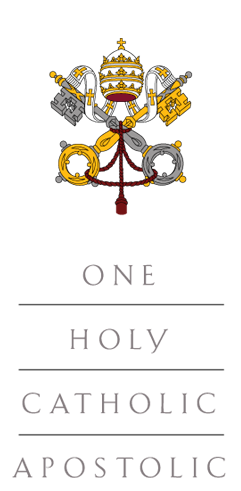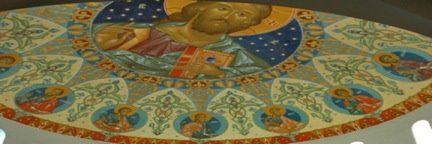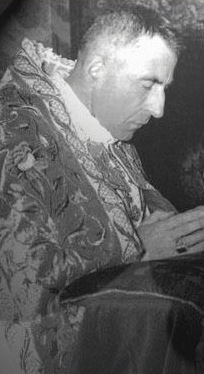
The Grace-Giving Infant Jesus of Prague
The charming statue of the Child Jesus, displayed for people to venerate in the church of Our Lady of Victory in the Lesser Town district of Prague, receives visitors from dozens of countries from all over the world every day. Many people who have prayed to God before the statue have had their prayers answered in miraculous and unusual ways. People come here to pray for help, healing, or peace; some come in trust expecting the birth of a child; and many return to give thanks.
The statue is 47 cm high and made out of wood with the surface modelled in coloured wax. It represents a small child, clothed in a long robe below which his bare feet can be seen. His sweet face attracts visitors through its beauty. The right hand of the Infant Jesus is raised in blessing, while his left hand holds a sphere surmounted by a cross – the whole of our universe rests in his hands. His royal insignia express the faith that all Christians have in common – the faith in the divinity of Jesus. In him almighty God himself, ruler over all things, became a human being.
History of the Infant Jesus of Prague
The Infant Jesus of Prague originally came from Spain. The legend tells that the Infant Jesus appeared miraculously to a certain monk, who modelled the statue based on the appearance of the apparition. According to another legend the statue belonged to St. Teresa of Avila, the founder of the Discalced Carmelites, who was aflame with a great love for the Child Jesus. She is said to have given the statue to a friend of hers, whose daughter was setting out to travel to Prague.
When the Duchess Maria Manrique de Lara came to Bohemia to marry a Bohemian nobleman in 1556, she received the statue from her mother as a wedding gift. When her daughter Polyxena of Lobkowicz was widowed, she gave the precious statue to the monastery of the Discalced Carmelites attached to the church of Our Lady of Victory in 1628.
The Carmelites placed the statue in the novitiate chapel, so that the young monks could learn from the virtues of the Child Jesus. At that time the Thirty Years' War was raging through Europe and even the Infant Jesus was not spared when the Saxon army occupied Prague in 1631. It was only after his return to Prague in 1637 that Father Cyril of the Mother of God, originally from Luxemburg, discovered the statue, abandoned in a corner. To his sorrow, however, he found that the Infant Jesus had had both hands broken off. At this moment it seemed to him that the Infant Jesus was saying to him:
"Have mercy on me and I will have mercy on you.
Give me hands and I will give you peace.
The more you honour me, the more I will bless you."
Eventually Father Cyril had new hands made for the Infant Jesus. The gold coin invested in this was returned many times over, as the Child Jesus began to bless the monastery, the local people, and the whole of Prague. Miraculous healings were attributed to him, as was the protection of Prague when it was laid siege to by the Swedes in 1639. In 1651 the statue was carried as a pilgrim round all the churches in Prague and in 1655 it was solemnly crowned by the Bishop of Prague. This event is still remembered today on the anniversary feast-day, falling on the first Sunday in May.

The statue of the Infant Jesus of Prague
Origin, size, material and appearance
According to the sources, the statue of the Infant Jesus of Prague, the original of which is venerated in the church of Our Lady of Victory in the Lesser Town district of Prague, originally came from Spain. It was probably made there in the second half of the 16th century or earlier.
The statue is 47 cm high and represents Jesus when he was only a few years old. On a 2-cm base there is a figure measuring 45 cm, dressed in a long flowing robe. Parts of the feet are visible beneath the bottom of the robe. The face is very delicately modeled and framed by medium-length curling hair.
The core of the statue is carved out of wood, which is probably covered with linen, and the surface is modeled in coloured wax. The surface of the wax is quite fragile. In order to protect the statue from damage, it's bottom half till the waist is enclosed in a silver case.
Gestures and royal attributes of the statue
The Infant Jesus has his right hand raised in blessing, while the left hand has its palm turned upwards and holds a symbol of rule over the world – the imperial orb surmounted by a cross. There is an opening in the palm of the hand, in which the orb is fixed. In the past, the statue was decorated with small jewels, presented as gifts by the faithful. The most valuable one was a copy of the Order of the Golden Fleece, which is now lost.
The crown which currently adorns the head of the Infant Jesus was made in the years 1810 to 1820. The Infant Jesus also has a second crown dating from 1767. Both crowns were made in the workshops of Prague goldsmiths. The crown is not placed directly on the statue but is fixed independently just above it.
Robes of the Infant Jesus of Prague
Purpose of dressing the statue
The ancient tradition of dressing the grace-giving statue of the Infant Jesus is intended to bring Jesus closer to the faithful as a real human being. It helps us to experience the closeness of Jesus and to express our love and reverence. It is not a case of idolatry, for the statue is not alive and it serves only as a reminder and a means of enabling a spiritual encounter with the living Christ.
The statue itself represents Jesus as a very small child, wearing a simple gown. This statue, sublime in its simplicity, is dressed in a white alb and royal robes to express the thought that is common to all Christians, that this child is a king of the house of David, and, what is more, that Jesus is Son of God and God himself, King of Kings and Lord of Lords.

The Infant Jesus of Prague has been dressed in different clothes from time immemorial, and people know him best in his royal robes. Most of his outfits are gifts of thanksgiving. The wardrobe numbers around a hundred costumes, some of which are incomplete or unusable. Some of the costumes can be seen in the museum, which the public can visit free of charge. The task of changing the Infant Jesus' robes is entrusted to the Carmelite Sisters of the Child Jesus, who help the Discalced Carmelite Fathers to look after this place of pilgrimage.
Colours of the robes
The robes of the Infant Jesus of Prague are changed so that the colour corresponds to the liturgical season, which is governed by the church calendar. Four basic colours are normally used:
* White – festive colour of purity and holiness – for feast days and the Easter and Christmas periods
* Red – colour of blood and fire, royal colour – for Holy Week, Pentecost time and feasts of the Holy Cross
* Violet – solemn colour symbolising repentance – for the Lenten and Advent seasons
* Green – colour of life and hope – for ordinary time (colour used most often)
On the feast of his coronation the Infant Jesus is usually dressed in royal robes with an ermine mantle. On special occasions other colours are used:
* Rose – colour of subdued joy – may be used on the third Sunday of Advent and the fourth Sunday of Lent
* Gold – festive colour – may replace other colours
Blue – sometimes used as a festive colour, especially for feasts of Our Lady
Chaplet to the Child Jesus
This chaplet consists of three "Our Fathers" in honor of the Holy Family, and twelve "Hail Marys" in memory of the twelve childhood years of Jesus Christ. To this chaplet of fifteen beads is attached a medal of the Infant Jesus.
The chaplet can be recited in the following way:
Begin on the medal with the words: "Holy Infant Jesus, bless and protect us!" or with the following invocation: "Divine Infant Jesus, I adore Your Cross,and I accept all the crosses you will be pleased to send me. Adorable Trinity, I offer you for the glory of the Holy Name of God all the adorations of the Sacred Hear of the Holy Infant Jesus."
You may kiss the medal.
 Say three times "And the Word was made flesh and dwelt among us" and the prayer "Our Father".
Say three times "And the Word was made flesh and dwelt among us" and the prayer "Our Father".Then twelve times "And the Word was made flesh and dwelt among us" and the prayer "Hail Mary". During each "Hail Mary" it is recommended that you meditate on one of the twelve mysteries of Jesus' childhood:
1. The Incarnation of the Son of God
2. The life in the womb of the Virgin Mary
3. The birth in Bethlehem
4. The adoration by the shepherds
5. The circumcision of the Lord
6. The adoration by the three magi
7. The presentation in the Temple
8. The flight to Egypt
9. The stay in Egypt
10. The return to Nazareth
11. The hidden life in Nazareth
12. The twelve-year-old Jesus in the Temple
At the end, you may add (once or thrice): "Glory be to the Father…" and "Holy Infant Jesus, bless and protect us!"







































No comments:
Post a Comment